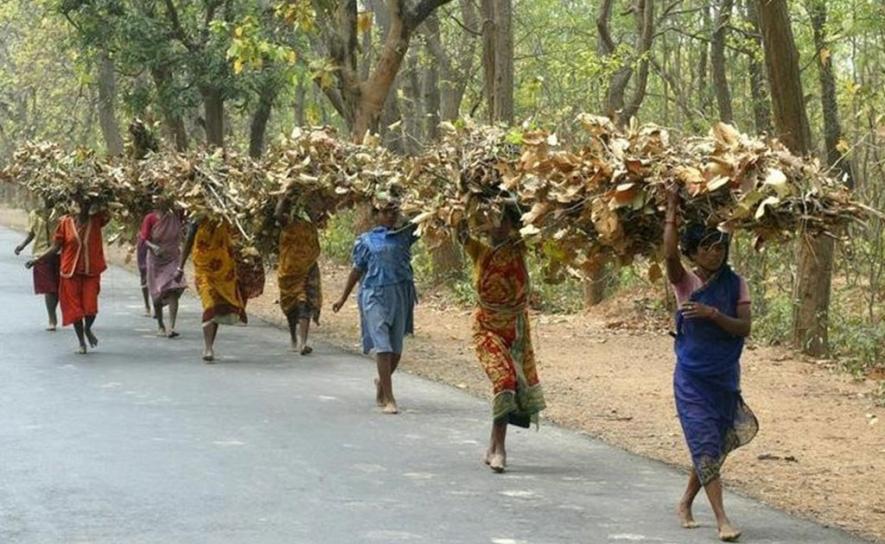Dire Need of a Legal Definition of Forest in India

Despite a longstanding demand from various quarters for a “comprehensive amendment” of the Indian Forest Act, 1927, the BJP government has again neglected the crucial issue in the ongoing winter session. Amendments in the Forests Act are significant mainly for the proper implementation of several other existing laws including Forest Rights Act, 2006; Panchayats (Extension to Scheduled Areas) (PESA) Act, 1996; Wildlife Protection Act, 1972; Land Acquisition Act, 2013; and state laws related to land and forests.
Earlier this year, the Ministry of Environment, Forest and Climate Change (MoEFC) had formed a committee under the chairmanship of the additional director general of forests, to recommend necessary amendments for the Forest Act. Reportedly, the committee is considering to include definition of forests, pollution, ecological services, and forest produce in the amendments.
There is a dire need of introducing a universally accepted legal definition of ‘forest’ in our country, as none of the existing laws have defined the term, except for one. The Supreme Court in its order dated December 12, 1996, stated that the word forest “must be understood according to its dictionary meaning. This description covers all statutorily recognised forests, whether designated as reserved, protected or otherwise for the purpose of Section 2(i) of the Forest Conservation Act (1980). The term forest land, occurring in Section 2, will not only include forest as understood in the dictionary sense, but also any area recorded as forest in the government record irrespective of the ownership.”
Tribal Claims Rejected
This legal definition had turned out to be incomplete and had ramifications in the implementation of the Forest Rights Act, 2006. It is to be considered that there has been a huge rejection rate when individuals and communities from Scheduled Tribes and other forest dwellers claim their rights over forest land, under the FRA Act.
Also Read: Tribal Converts Will not be Entitled to Benefits: Gujarat Minister
As of August 31, 2018, while 42,10,378 claims (including individual and community claims) were received by the government under FRA across the country; 46 per cent of the claims, that is 19,40,492 claims have been rejected.
According to the Forest Survey of India (FSI), the country’s total forest cover is 708,273 square km, which is only 21.54 per cent of India’s total geographical area. However, there is a massive diversion of forest lands for setting up industrial projects. In the last 32 years, a total of 15,191 square km of forest land has been diverted for industrial projects, according to government data.
Also Read: ‘Earth Champion’ Irony: High Praise, Low Performance
As per FSI, forest is defined as all lands “which have a tree canopy density of more than 10 per cent when projected vertically on the horizontal ground, within a minimum areal extent of one hectare.” However, this definition does not distinguish between tree species, land use or ownership. This is similar to the “Tree Cover” definition by Global Forest Watch, a project run by a partnership of the University of Maryland, Google and the World Resources Institute. But, GFW considers trees in vegetation that is taller than five metres in height, whereas FSI doesn’t specify any such limit.
“In India, there are many varieties of forests including shrub forests, mangroves, coral reefs, grasslands and so on and considering only “Tree cover” or dictionary definition for forest is not enough,” said environmentalist Stalin Dayanand. He added, “Forests must be considered as a representative ecosystem which supports life in the absence of human intervention.”
On the other side, the government’s latest draft forest policy has proposed development of “public private partnership models” on forest lands but what constitutes a forest is not defined. Tribal Ministry has interfered in this matter and wrote a letter to the MoEFC stating that forest ministry alone does not have “exclusive jurisdiction” to frame policies related to forests and insisted to consult the Tribal Ministry for any policies on forests.
A recently released MoEFC expert committee report - Strategy for Increasing Green Cover Outside Recorded Forests - has also highlighted the need for amendments in the Indian Forest Act, 1927, pointing out the need for defining the forest produce.
As it is evident that forest related governance is mired in controversies and technical problems, and handling the crisis has to begin by bringing acceptable amendments to the Forest Act.
Read More: Kandhamal Tribes Held Traditional Festival During Gram Sabhas to Protect Forest Resources
Get the latest reports & analysis with people's perspective on Protests, movements & deep analytical videos, discussions of the current affairs in your Telegram app. Subscribe to NewsClick's Telegram channel & get Real-Time updates on stories, as they get published on our website.























